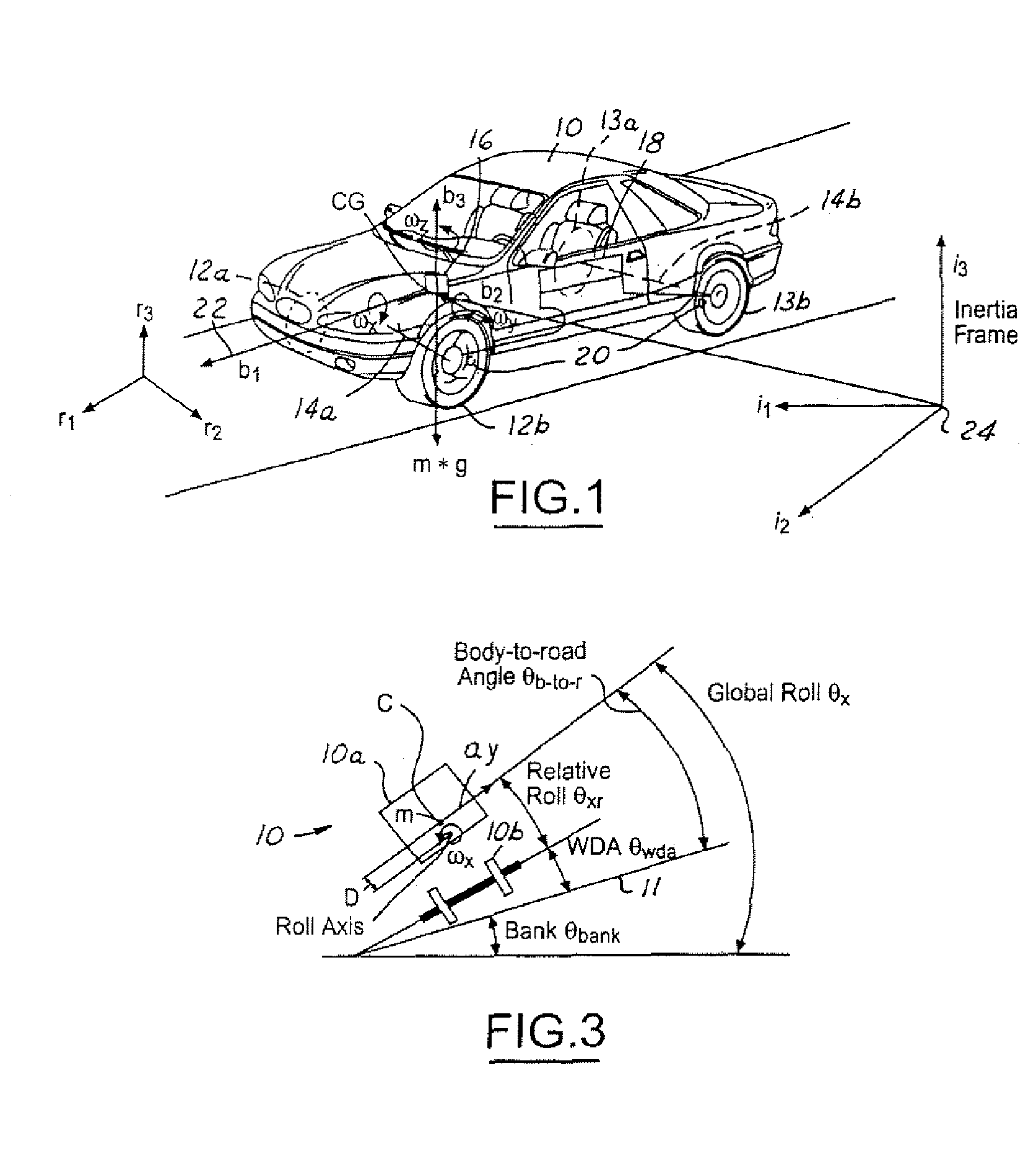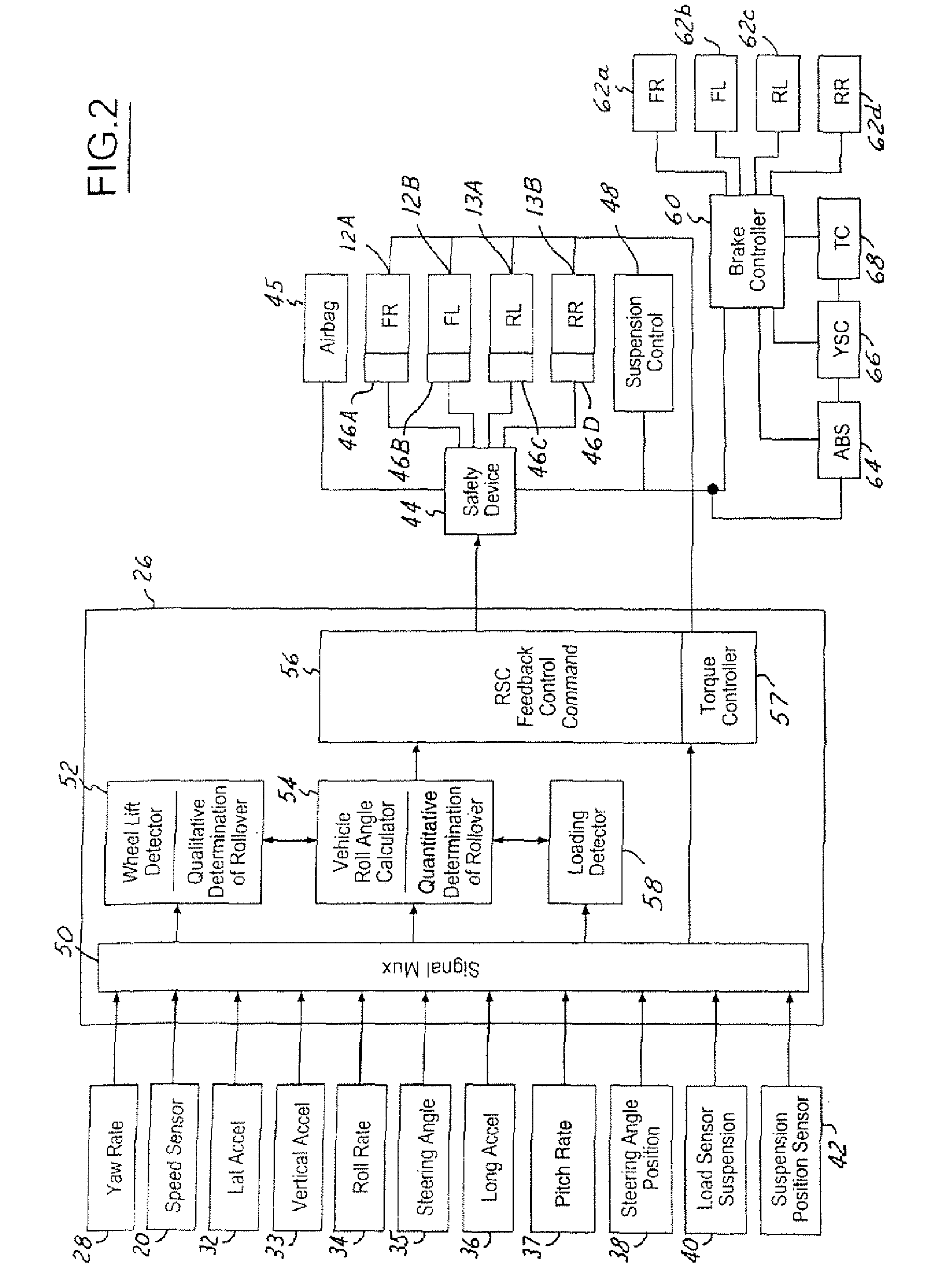Roll stability control using four-wheel drive
a stability control and four-wheel drive technology, applied in the direction of machine control, instrumentation, process control, etc., can solve the problems of affecting the performance of vehicle roll and yaw stability control, affecting the stability of the vehicle, and prone to oversteering the vehicle, so as to improve the driving torque of the driven wheels, reduce the tendency of vehicle rollover, and simple driving torque control
- Summary
- Abstract
- Description
- Claims
- Application Information
AI Technical Summary
Benefits of technology
Problems solved by technology
Method used
Image
Examples
Embodiment Construction
[0029] In the following figures, the same reference numerals will be used to identify the same components. The present invention is preferably used in conjunction with a roll stability control system or a rollover stability control or a rollover control system for a vehicle. However, the present invention may also be used with a deployment device such as an airbag or an active roll bar. The present invention will be discussed below in terms of preferred embodiments relating to an automotive vehicle moving in a three-dimensional road terrain. Also, the system may be used with a four-wheel drive or all-wheel drive vehicle. Such a vehicle is generally referred to as a four driven wheel vehicle since each of the wheels is capable of generating longitudinal forces derived from the powertrain.
[0030] Referring to FIG. 1, an automotive vehicle 10 with an active safety system of the present invention is illustrated with the various forces and moments thereon during a potential rollover cond...
PUM
 Login to View More
Login to View More Abstract
Description
Claims
Application Information
 Login to View More
Login to View More - R&D
- Intellectual Property
- Life Sciences
- Materials
- Tech Scout
- Unparalleled Data Quality
- Higher Quality Content
- 60% Fewer Hallucinations
Browse by: Latest US Patents, China's latest patents, Technical Efficacy Thesaurus, Application Domain, Technology Topic, Popular Technical Reports.
© 2025 PatSnap. All rights reserved.Legal|Privacy policy|Modern Slavery Act Transparency Statement|Sitemap|About US| Contact US: help@patsnap.com



